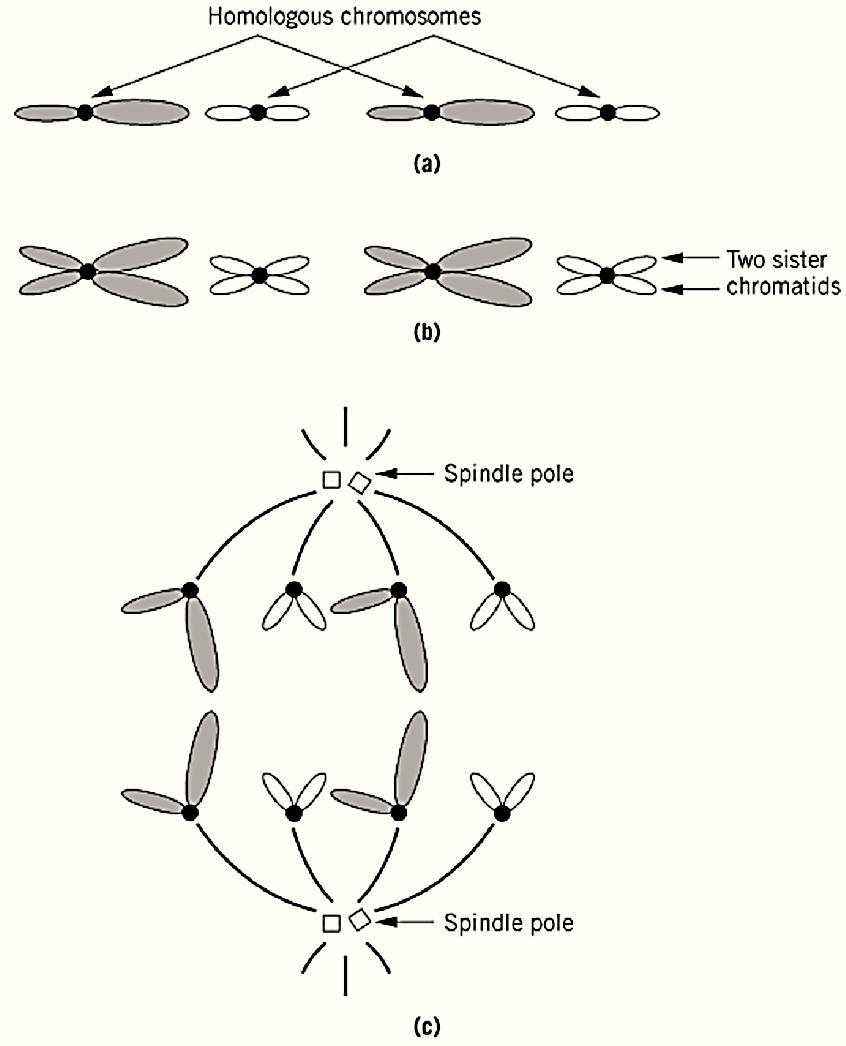

النبات

مواضيع عامة في علم النبات

الجذور - السيقان - الأوراق

النباتات الوعائية واللاوعائية

البذور (مغطاة البذور - عاريات البذور)

الطحالب

النباتات الطبية


الحيوان

مواضيع عامة في علم الحيوان

علم التشريح

التنوع الإحيائي

البايلوجيا الخلوية


الأحياء المجهرية

البكتيريا

الفطريات

الطفيليات

الفايروسات


علم الأمراض

الاورام

الامراض الوراثية

الامراض المناعية

الامراض المدارية

اضطرابات الدورة الدموية

مواضيع عامة في علم الامراض

الحشرات


التقانة الإحيائية

مواضيع عامة في التقانة الإحيائية


التقنية الحيوية المكروبية

التقنية الحيوية والميكروبات

الفعاليات الحيوية

وراثة الاحياء المجهرية

تصنيف الاحياء المجهرية

الاحياء المجهرية في الطبيعة

أيض الاجهاد

التقنية الحيوية والبيئة

التقنية الحيوية والطب

التقنية الحيوية والزراعة

التقنية الحيوية والصناعة

التقنية الحيوية والطاقة

البحار والطحالب الصغيرة

عزل البروتين

هندسة الجينات


التقنية الحياتية النانوية

مفاهيم التقنية الحيوية النانوية

التراكيب النانوية والمجاهر المستخدمة في رؤيتها

تصنيع وتخليق المواد النانوية

تطبيقات التقنية النانوية والحيوية النانوية

الرقائق والمتحسسات الحيوية

المصفوفات المجهرية وحاسوب الدنا

اللقاحات

البيئة والتلوث


علم الأجنة

اعضاء التكاثر وتشكل الاعراس

الاخصاب

التشطر

العصيبة وتشكل الجسيدات

تشكل اللواحق الجنينية

تكون المعيدة وظهور الطبقات الجنينية

مقدمة لعلم الاجنة


الأحياء الجزيئي

مواضيع عامة في الاحياء الجزيئي


علم وظائف الأعضاء


الغدد

مواضيع عامة في الغدد

الغدد الصم و هرموناتها

الجسم تحت السريري

الغدة النخامية

الغدة الكظرية

الغدة التناسلية

الغدة الدرقية والجار الدرقية

الغدة البنكرياسية

الغدة الصنوبرية

مواضيع عامة في علم وظائف الاعضاء

الخلية الحيوانية

الجهاز العصبي

أعضاء الحس

الجهاز العضلي

السوائل الجسمية

الجهاز الدوري والليمف

الجهاز التنفسي

الجهاز الهضمي

الجهاز البولي


المضادات الميكروبية

مواضيع عامة في المضادات الميكروبية

مضادات البكتيريا

مضادات الفطريات

مضادات الطفيليات

مضادات الفايروسات

علم الخلية

الوراثة

الأحياء العامة

المناعة

التحليلات المرضية

الكيمياء الحيوية

مواضيع متنوعة أخرى

الانزيمات
Chromatid
المؤلف:
Thomas E.Creighton
المصدر:
ENCYCLOPEDIA OF MOLECULAR BIOLOGY
الجزء والصفحة:
21-12-2015
2841
Chromatid
A chromatid is one of the two adjacent strands of a chromosome that are generated as a result of chromosomal duplication. The two chromatids are held together at the centromere and become visible during mitosis (Fig. 1, see top of next page). Chromosomal dynamics during the cell cycle are conveniently discussed in terms of the appearance and behavior of chromatids. It is during interphase that DNA is replicated (S-phase). Before the S-phase there is a gap known as G1, when the chromosomes are considered to be unineme, meaning that a single duplex DNA molecule runs the entire length of the chromosome. The amount of DNA in G1 per haploid genome is called the C-value. A diploid cell has a 2C DNA content. After the S-phase, in the gap known as G2, the chromosomes have duplicated and there is a 4C DNA content. Now each chromosome consists of two unineme sister chromatids. Mitosis begins at the end of G2. Whereas the chromosomes are too diffuse and decondensed to be visualized when somatic cells are in the interphase, during mitosis the chromosomes and chromatids become visible. Mitosis can be divided into four stages. During prophase, the chromatin in the chromosomes begins to condense so that they appear as morphologically indistinct, diffuse threads. At the end of the prophase, the chromosomes become well separated. Now each chromosome is distinctly double-stranded, consistent with two sister chromatids joined at the centromere. In the metaphase the chromosomes are maximally contracted and align on a plane, known as the metaphase plate. The metaphase plate is midway between the spindle poles and represents an integral component of the mitotic spindle. In the anaphase, the pairing region within the centromere dissolves. This allows the mitotic spindle to pull the two sister chromatids apart. Each pole receives a complete set of chromatids, representing all of the chromosomes. Finally in telophase the mitotic spindle breaks down, and the nuclear membrane is reassembled around the chromosomes. The chromosomes progressively decondense and cease to be visible by light microscopy.

Figure 1. Chromosomal dynamics during the cell cycle. (a) At the end of mitosis and in G1, there are two copies of each chromosome, called homologous chromosomes, in a diploid cell. (b) At the end of the S-phase and in G2, each chromatid in each chromosome has been duplicated, creating two sister chromatids joined at the centromere. (c(During the anaphase of mitosis the two sister chromatids separate and move to opposite spindle poles.
Sister chromatids also interact during meiosis, which represents the cell division, chromosomal and chromatid segregation events associated with gamete formation. There are two cell divisions during meiosis. Once again chromosomal dynamics are best described in terms of the segregation of chromatids. Initially, the chromosomes replicate, then the cell enters the first meiotic cell division. Homologous chromosomes are attracted to each other, forming stable pairs held together by the synaptonemal complex. Thus each structure consists of two chromosomes, each containing two sister chromatids. Recombination occurs between the maternal- and paternal-derived chromosomes. Sites of such genetic crossing over are called chiasmata. Chiasmata represent sites of physical breakage and reunion between nonsister chromatids. They generally encompass a few hundred to a few thousand base pairs of DNA. Finally, each pair of chromosomes separates. At the start of the second meiotic cell division, each chromosome consists of two chromatids joined by a centromere. Then the chromatids are aligned on a metaphase plate attached to a spindle. The centromere splits, and the two sister chromatids move to opposite poles. Then nuclei are reformed in each of the four haploid daughter cells. Thus for both mitosis and meiosis the mechanics of chromosome condensation, recombination, and segregation emphasize the fate of individual chromatids.
 الاكثر قراءة في مواضيع عامة في الاحياء الجزيئي
الاكثر قراءة في مواضيع عامة في الاحياء الجزيئي
 اخر الاخبار
اخر الاخبار
اخبار العتبة العباسية المقدسة

الآخبار الصحية















 قسم الشؤون الفكرية يصدر كتاباً يوثق تاريخ السدانة في العتبة العباسية المقدسة
قسم الشؤون الفكرية يصدر كتاباً يوثق تاريخ السدانة في العتبة العباسية المقدسة "المهمة".. إصدار قصصي يوثّق القصص الفائزة في مسابقة فتوى الدفاع المقدسة للقصة القصيرة
"المهمة".. إصدار قصصي يوثّق القصص الفائزة في مسابقة فتوى الدفاع المقدسة للقصة القصيرة (نوافذ).. إصدار أدبي يوثق القصص الفائزة في مسابقة الإمام العسكري (عليه السلام)
(نوافذ).. إصدار أدبي يوثق القصص الفائزة في مسابقة الإمام العسكري (عليه السلام)


















